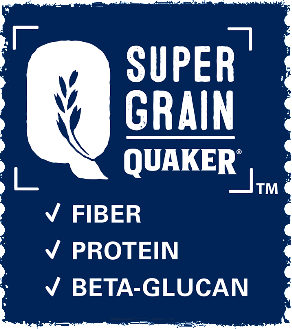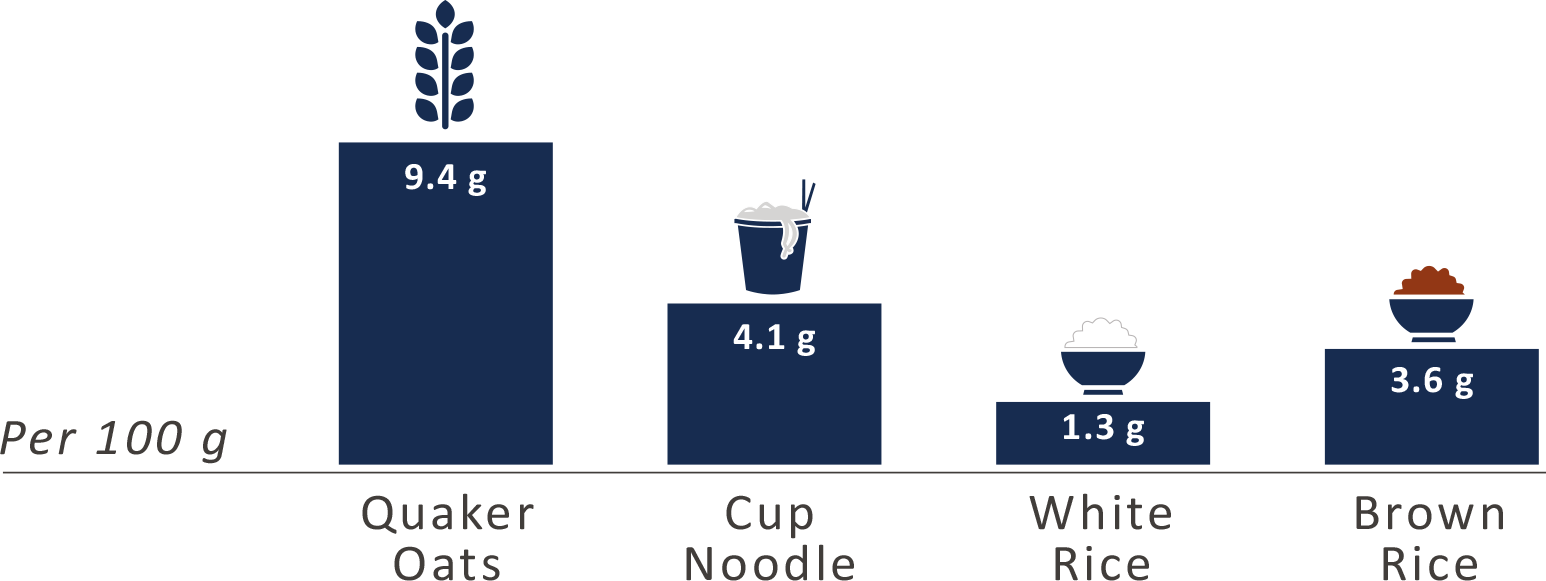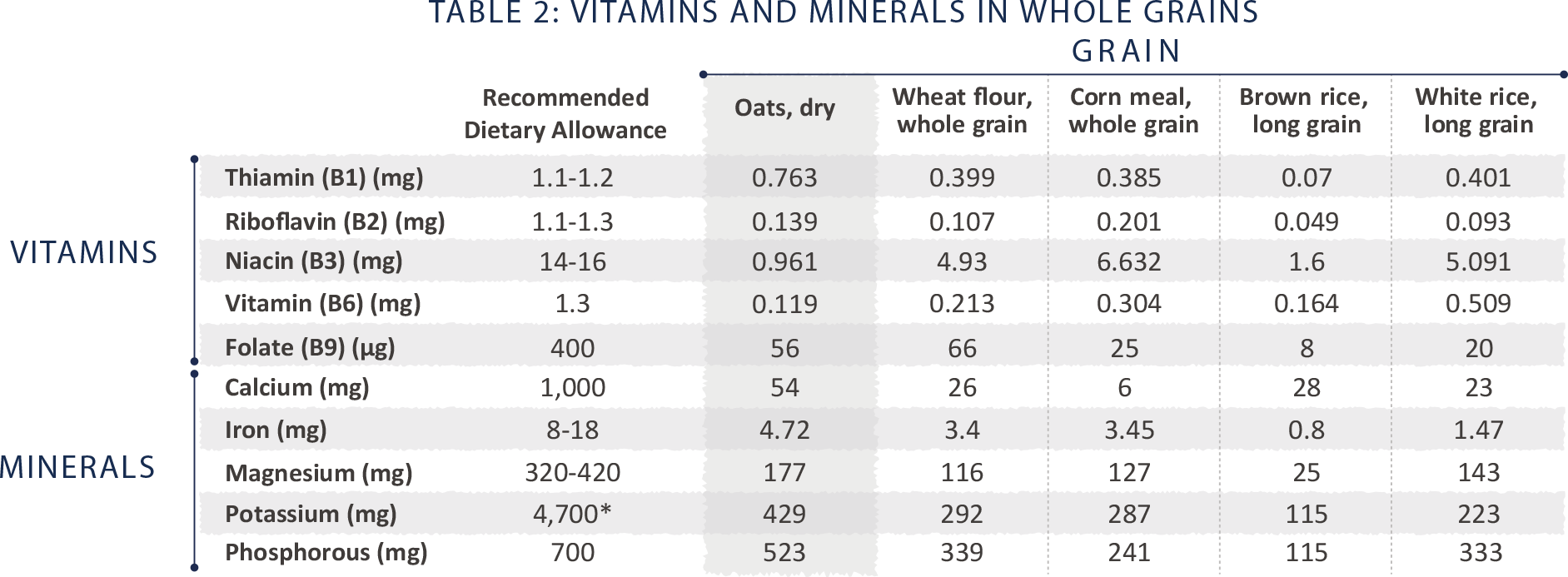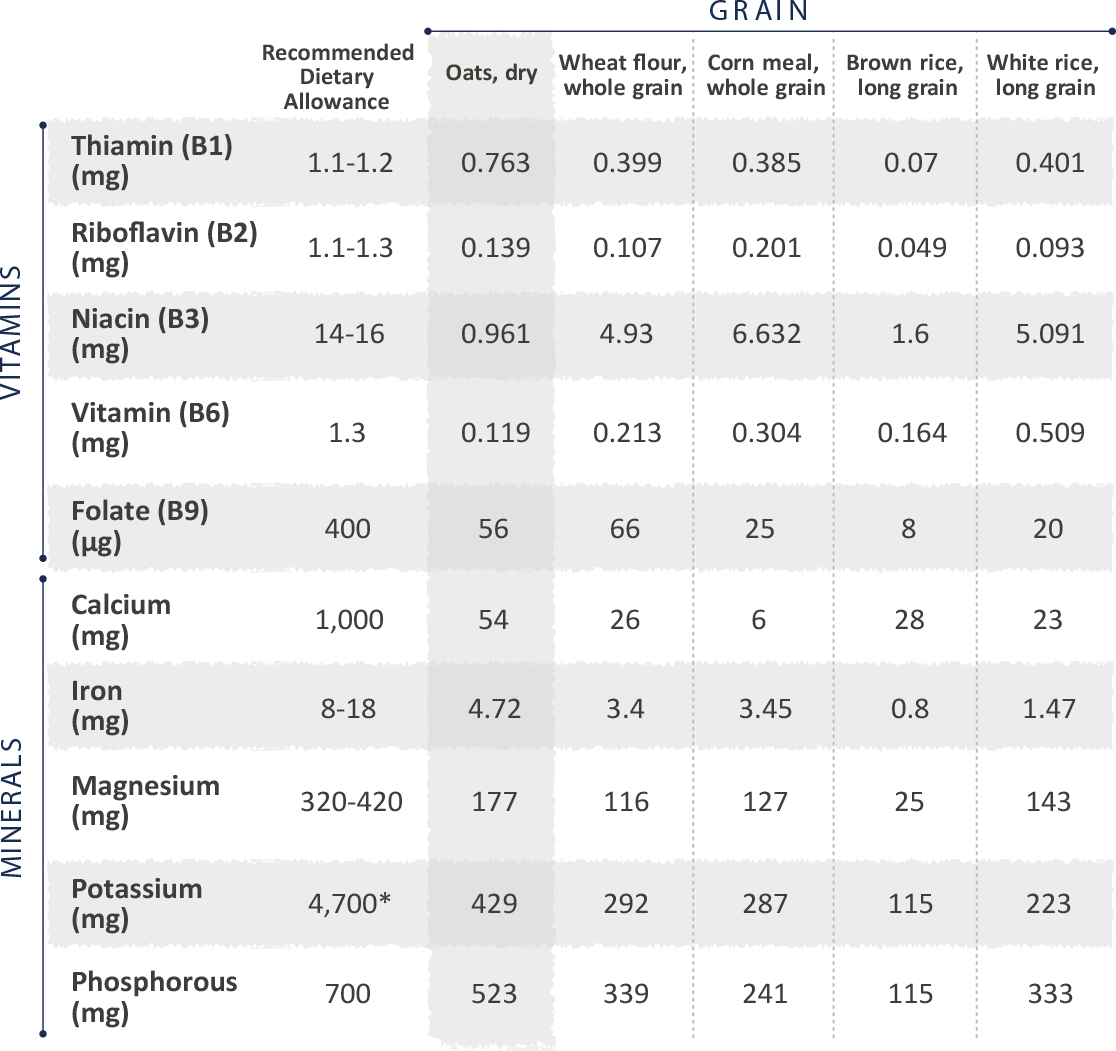
WHAT MAKES QUAKER A SUPERGRAIN?
Oats are one of the most nutrient-dense foods around. That’s why we call it a supergrain. Discover what the nutrients in Quaker Oats can do for your body.

Oats are one of the most nutrient-dense foods around. That’s why we call it a supergrain. Discover what the nutrients in Quaker Oats can do for your body.
The fiber in oats is good for maintaining digestive health. It is found in all three parts of whole grain oats: bran, endosperm, germ. Each has their own benefit:
a. Oat bran – contains the greatest amount of Beta-Glucan and is a rich source of B vitamins and nutrients.
b. Oat endosperm – the largest section of plant serves as the main energy source, containing the most carbohydrate and protein.
c. Oat germ – the heart of the grain is loaded with nutrients like B vitamins, vitamin E, trace minerals and phytochemicals.
Fiber in oats can help slow digestion and the release of glucose into the blood stream. So, you feel full for longer and have lasting energy throughout the day.
Just one-half cup of oatmeal provides 15% of the daily value of fiber. It contains only 150 calories. And when consumed with one cup of fat-free milk, it can help keep you full for up to 4 hours.
Here’s the fiber in oats compared to other food:


Oats are a good source of protein, which helps build & maintain body tissues. The protein content in oats is higher compared to most cereals. Here’s the protein in oats compared to whole grains:


Quaker Oats is also a rich source of Beta-Glucan. This helps lower cholesterol, especially when accompanied by a diet low in saturated fat. It is also a source of many vitamins and minerals, which is good for general health and wellness.


Sources:
USDA Food Composition Databases; per 100g reference amount (Oats-08402, White Rice-20444, Brown Rice-20036, and Noodle Cup-45258552).
US Department of Agriculture, Agricultural Research Service. USDA National Nutrient Database for Standard Reference. Release 28. Slightly revised May 2016.
Rebello CJ. et al. FASEB J. April 2013:27:126.4.
Hlebowicz J, et al. (2007). Nutr J 6:22. (https://doi.org/10.1186/1475-2891-6-22); Rebello CJ, et al. (2013). J Am Coll Nutr 32(4):272-279; Rebello CJ, et al. (2016). J Am Coll Nutr 35(1): 41-49; Rebello CJ, et al. (2016). Nutr Rev. Feb; 74(2): 131–147.
Source: USDA Nutrient Data per 100 g reference amount (Oats-08402, White Rice-20444, Brown Rice-20036, White Wheat Flour-20481, Pearled Barley-20005, and Whole Corn Flour-20016)